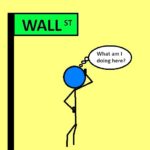Teschler on Topic
Leland Teschler • Executive Editor
I once worked for a company whose business was a mix of publications and trade shows. The trade shows made a lot of money. The publications were profitable, but not nearly as much as the shows. That made those of us writing for the company’s magazines and websites a little like second-class citizens. We had no clout or resources, and the trade show folks often treated us like we had IQs ten points lower than theirs.
I eventually left this sorry situation, but I kept tabs on my old employer. The company was eventually sold to a  firm whose overwhelming majority of revenues came from running industrial trade shows. This outfit couldn’t wait to dump the publications and websites that came with the acquisition. That left them even more heavily invested in the trade show business, which was their goal all along.
firm whose overwhelming majority of revenues came from running industrial trade shows. This outfit couldn’t wait to dump the publications and websites that came with the acquisition. That left them even more heavily invested in the trade show business, which was their goal all along.
All this transpired just before Covid hit. If you are familiar with the current state of exhibitions and public events, you can probably guess what happened next. With few other business lines to cushion the fall, the company went from a first-half operating profit last year of $321 million to a first-half operating loss this year of $957 million. Massive layoffs have ensued. The word bloodbath comes to mind.
These results probably wouldn’t surprise University of Toronto Professor Roger L. Martin. Martin is an outspoken proponent of the idea that the single-minded quest for growth–as practiced by the money-losing trade show company—is a pretty dumb idea. “Judging company performance solely on the basis of short-term shareholder value increase has caused executives to give short shrift to long-term stewardship of their employees, communities, and the environment,” he says.
Martin also blames this lack of balance partly for the big divide between the working class and the well off. “Unconstrained pursuit of labor-cost efficiency has left tens of millions of American workers earning less than a living wage while the top 1% achieve unprecedented wealth,” he says. He doesn’t see the situation getting better so long as “business, economics, and public-policy schools still teach the importance of a singular objective function…And it isn’t going to happen as long as reward systems are geared around achieving singular goals–like achieving this year’s budget, which is still the dominant goal in much of American public and private-sector life.”
Interestingly, basic engineering practice illustrates the downside of running a business according to the theories Prof. Martin rails against. Suppose you set out to design a circuit or a suspension bridge. If you subscribed to the maximum optimization theory prevalent in business today, you’d build in no cushion whatsoever to handle loads even slightly larger than the design maximum. After all, adding capacity above what’s necessary could be viewed as spending money on unused resources. Business schools teach that the presence of unused resources is a situation that good managers must avoid or risk termination.
Of course, an engineer who allowed no safety margin in the interest of efficiency wouldn’t be designing products for long. But a manager running a business this way might wind up keynoting the consumer CES show—if the trade show business wasn’t in shambles. DW
You may also like:
Filed Under: MORE INDUSTRIES









